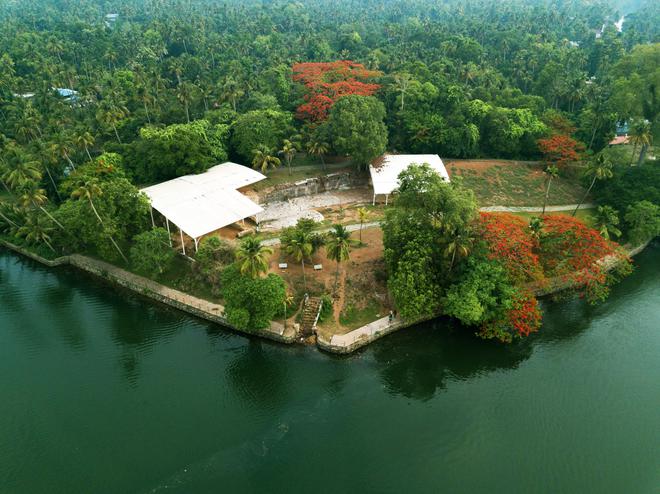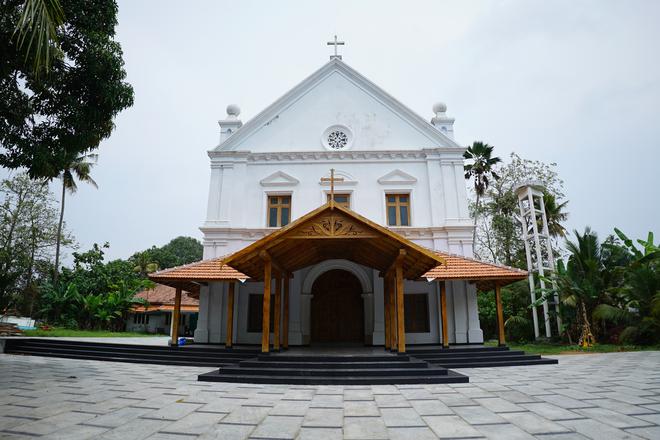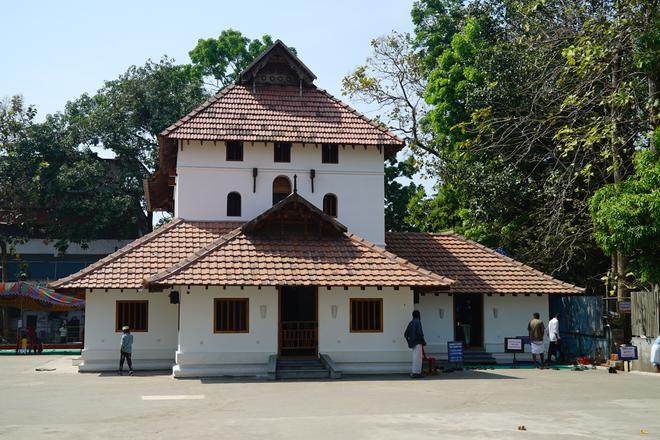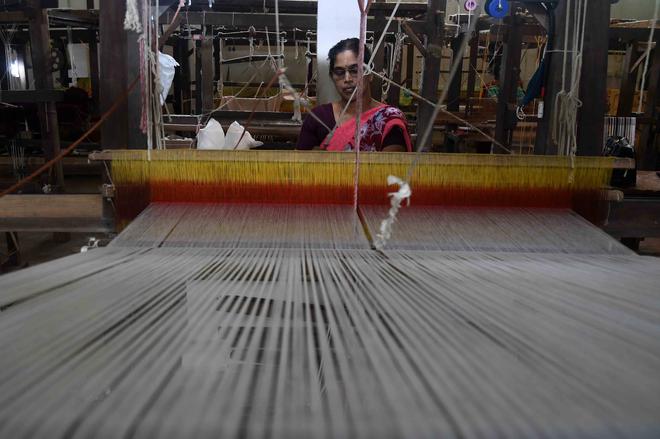Say Muziris and the faces of members of the local community and those involved in tourism and heritage activities across the sprawling cultural landscapes of Kerala’s North Paravur-Kodungalloor-Mathilakam area on the Ernakulam-Thrissur border across 150 sq km light up with pride.
With the second phase conservation works of monuments in Muziris — a legendary port located here that is said to have been the hub of the historic spice route about 2,500 years ago — nearing completion, the locale is once again at the centre stage of attention.
The monuments are bedecked to receive heritage enthusiasts, students and others who are in search of Kerala’s history and the seaborne trade it had with a vast array of countries back then. The Muziris Heritage Project (MHP) is once again in the limelight.
That people move around in laidback pace, a stark contrast from life in cities and towns, is yet another attraction here.

Among those who pride themselves of being from the Muziris region is Jagadambika Lenin, who has been into weaving handloom textiles for the past 42 years. “All four of us siblings were weavers, since Chendamangalam handloom is world famous. And we got to witness the paradigm shift in the sector through the decades, thanks to new designs being incorporated. Visitors from across the globe who come to learn about the conserved monuments at Muziris have spread our fame even farther.”
The weavers here are also nowadays ready to churn out tailor-made sari, double mundu with kasavu, set sari/mundu, shirts etc., since many who come to check out the monuments make a stopover at weaving units. “We are thrilled that handloom in back in demand, especially for marriages and other functions, and expect more visitors to trickle into Muziris,” she says.

The Muziris port said to have been the hub of the historic spice route about 2,500 years ago. The story goes that it was erased from the map following large-scale floods, which in turn led to the creation of the Kochi harbour. The rich and diverse history of the Muziris region is still evident here in the form of over three dozen iconic monuments — places of worship (synagogues, churches, temples, mosques), palaces, forts, seminaries, Jewish and Christian cemeteries, boat-making yards, and ancient markets spread over the project zone. Some heritage structures have already seen conservation efforts, while others await their turn.
It is against this backdrop that the second phase of conservation and restoration works of 18 small and large initiatives in Thrissur, Ernakulam, and Alappuzha districts under the MHP have been completed and are ready for inauguration.
Hop-on boats
With more monuments getting ready to welcome visitors, foreign and domestic tourists, including those from other districts of Kerala, have begun visiting the area from early this year, after a lull following the pandemic. The footfall increases over the weekend. On July 15, a Saturday, the Kottapuram waterfront saw two dozen people boarding ‘hop-on hop-off’ boats.

Nithin Raj and his family of four from Palakkad were among those who arrived here to walk in the historical area. They enjoyed the neatly-maintained walkway abutting the backwaters and savoured the seafood from eateries that dot the waterfront. “We will return soon, to take the day-long boat tours of the heritage structures,” he says.
The MHP authorities have arranged half-a-dozen spice and heritage tour packages on board the boats which cover Paravur Synagogue, Sahodaran Ayyappan Museum, Pallipuram Manjumatha Church, the sea mouth, Paliam Nalukettu, Paliam Palace, Kottapuram Fort, and St Thomas Church, Azhikode.
Close to these are Cheraman Juma Masjid, thought of as the oldest mosque in the Indian subcontinent, Kodungalloor Bhagavathy Temple, Thiruvanchikulam Temple, and the Muziris Munakkal Dolphin beach.
“Over 200 people visit the famous Paliam Palace alone, during weekends,” says Vysakh P.S. from North Paravur, who has been a tour guide here for the past six years. Citing how boat tour of monuments here are becoming popular, he says a direct boat service from Kochi city will help bring in many more visitors.
Curious students
Visitors to Paliam Palace, the traditional residence of the Paliath Achans, included a family spanning three generations. Manu V. Nair from Thrissur, his parents, sister, and 10-year-old niece keenly listened to a tour guide who talked of the historic significance of each room, their aesthetics, a blend of Dutch and traditional Kerala architecture, and the materials used. “We have dedicated an entire day to check out such locales in Muziris. Having only so far heard of the Paliath Achans, I got a better perspective of his role in Kerala history,” says Manu.

His father Venugopal and the others were equally thrilled after their guided tour of the palace, Kottapuram Fort, and other monuments that had been conserved in phase one of the project.
While its exact location is still being debated, Muziris port was a great trading centre in the East. A multitude of goods from spices and precious stones were traded with the Greeks, Romans, and many others. It was also considered a doorway to India for varied cultures and races, says B. Venugopal, former Director, National Museum of Natural History.
Project history
The Government of Kerala announced the project in 2006, while the project picked up pace in 2009 with the joint support of the Government of India to reinstate the port’s tangible history and achieve larger development goals by reviving intangible heritage and other community activities.
There are many in the region such as Thaddeus Raphael, who operates an eatery in Kottapuram, who cites the need to develop amenities to enliven night life on the waterfront. “Direct road connectivity from NH 66 and better lighting will considerably help attain this. There is also the need to install well-designed biotoilets, since they are easy to operate and need little space,” he says.
Handloom village
The celebrated handloom weavers from Chendamangalam too are happy at the impending inauguration of more Muziris monuments and the work on Kaithari Graamam, an integrated handloom village spread over an acre-and-a-half at Chendamangalam, picking up pace. Already, over 200 families here are engaged in handloom-textiles manufacture.
“The Muziris project will considerably help handloom units in Ernakulam district, while the dedicated village was our dream project. The design centre here will in turn help modernise the sector,” says T.S. Baby, president of the Chendamangalam Yarn Society.
Value addition for Muziris
The handloom museum will showcase all aspects of the sector, says Pradeep Kumar, special officer of Kaithari Graamam. “It will turn out to be a value-addition to the MHP. A boat-landing centre nearby will help visitors to heritage locales halt here, visit the museums and a few households engaged in making handloom garments,” he says.
Local community initiatives
Under the MHP, the State government planned to establish over 30 museums in the project area by incorporating important historical buildings and sites identified from a survey conducted by a research team. Though the heritage project was primarily aimed at restoring abandoned monuments, it went the extra mile to ensure involvement of local communities in its endeavours, says Manoj Kumar Kini, managing director of the MHP.
Among these, the conservation work of eight museums: Paliam Palace and Nalukettu, Kottappuram Fort, memorial museums of Abdul Rahman Sahib, Kesari Balakrishna Pillai, Sahodaran Ayyappan, and Paravur and Chendamangalam synagogues were completed and opened to the public in 2014. The conservation works of a dozen minor and major projects under the heritage project are in progress and will be opened to the public soon.
Of the completed projects among them are Cheraman Juma Masjid, Paliam Oottupura, Kodungalloor Bhandarappura for temple museum, Pathinettarayalam Kovilakam, Canal Office, Holy Cross Church, PA Syed Mohammed Cultural Centre, Pattanam Interpretation Centre, Kezhthali Temple, Mathilakam Boat Jetty, and Muziris Munakkal Boat Jetty in Ernakulum and Thrissur districts.
Responding to demand for improving road connectivity to a few heritage locales here, sources say the matter has been taken up with local bodies. “The MHP has limited role in road-infra development, since it is a conservation project. It is based on the concept of helping people go back in time, while ensuring community development. Else old houses and buildings here will become a burden for their owners. It is an integrated process with tourism as a tool,” they say.
The project is an integrated effort by the MHP, State Archaeology department, Kerala Council for Historical Research, Archaeological Survey of India, Public Works department, Irrigation department, Kerala Water Authority, Kerala State Electricity Board, and the Education department. The development of the adjacent NH-66 as a six-lane corridor and augmenting of boats are expected to improve connectivity from Kochi city and from Thrissur district.
Extension
Considering Kerala’s rich cultural heritage and unique trade links with the rest of the world, expansion of the MHP has been found imperative. Therefore, it has been decided to extend its jurisdiction to Beypore in the north in Kozhikode and Kollam in the south, under the name Spice Route Heritage Project. For this, a model similar to the MHP should be developed. This project can strengthen peace-making efforts between various nations and revive cultural and academic exchanges and develop a multinational cultural corridor to bestow economic benefits to the locals, besides promoting Kerala’s rich and unique cultural heritage, says Manoj.
Alappuzha heritage project
As a primary step, efforts are under way to revive the ancient Alappuzha port, to help regain its golden age under the title of Alappuzha Heritage Project. In this, the town’s heritage and industrial structures will be conserved, preserving the physical and cultural aspects, some being converted into museums and others as public spaces. The State government has already readied proposals to revive the coastal town’s canals, including by restoring the waterbodies that people were once familiar with.
The heritage museums will explore more than 300 years of Alappuzha’s industrial and cultural heritage, becoming an enduring point of reference for people and children alike. It is hoped that four museums, including the Port Museum, Yarn Museum, Museum of Labour Movement and Coir History Museum, will be opened to the public as a result of the rapid restoration work carried out in recent years.
Know before you go
The best way to check out the conserved monuments is through guided boat-tour packages (barring Mondays when museums are closed). They are priced from ₹6,142 (for five people) to ₹23,100 (for 33 students), including expenses for welcome drink, entry fees to museums, tour guide, fish curry meals, evening tea and snacks.
The monuments covered include Paravur Jewish Synagogue, Sahodaran Ayyappan Museum, Pallipuram Manjumatha Church, the sea mouth, Paliam Nalukettu and Palace, Kottapuram Fort, and St. Thomas Church, Azhikode. The nearby places to visit include Cheraman Juma Masjid, Kodungalloor Bhagavathy Temple, Thiruvanjikilam Temple, and the Muziris Munakkal Dolphin beach.







